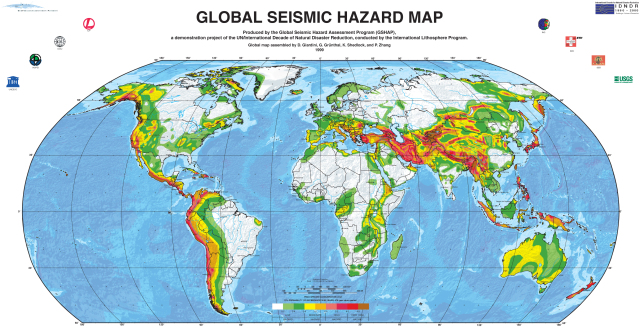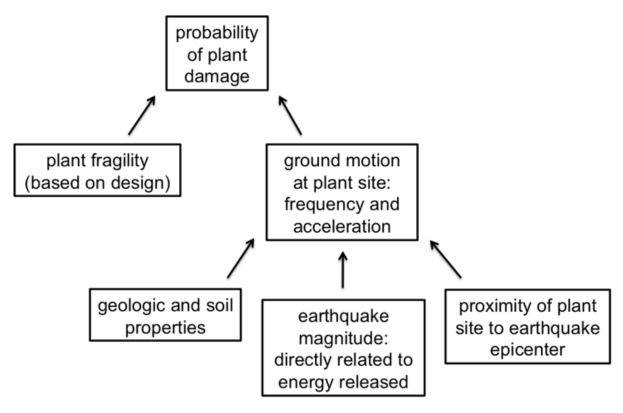On August 23, a magnitude 5.8 earthquake struck the Piedmont region of the U.S. East Coast near Mineral, Virginia. This was an intraplate earthquake – most earthquakes are interplate, meaning that they occur on fault lines that bound tectonic plates. Intraplate earthquakes tend to be much less frequent and much smaller in magnitude than interplate earthquakes. In fact, the most recent earthquake of larger magnitude to strike anywhere in the U.S. east of the Rockies occurred 114 years ago (one of equal magnitude occurred 67 years ago in upstate New York).
The North Anna Nuclear Generation Station, a nuclear plant located about 11 miles from the epicenter, automatically shut down both of its reactors as a safety precaution. Although off-site power was lost, four on-site diesel generators provided sufficient power to reactor safety systems. When one of these generators failed, a fifth backup generator was activated. Off-site power was restored later on the day of the earthquake, and the reactors will likely resume normal operation as soon as possible. No significant damage occurred, and no radioactive material was released.
In short, the nuclear plant and its safety systems functioned properly. Even this rare earthquake was within the design basis of all U.S. nuclear plants.
It is important to understand that Richter magnitude is only one of many factors that contribute to the seismic damage risk of a nuclear plant. Earthquakes of equal magnitude can cause vastly different ground shaking behavior, both in terms of ground shaking frequency and ground acceleration magnitude. Although Richter magnitude corresponds to the total energy released in an earthquake, that energy can be released and propagate in a variety of ways. For example, many people on the U.S. West Coast, who are much more familiar with earthquakes than their East Coast compatriots, were surprised that a mere 5.8 earthquake centered in Virginia could be felt in Massachusetts. Had a 5.8 earthquake occurred in San Diego, people in Los Angeles would probably never know it. Indeed, the older, more solid and connected geology of the Piedmont allows for seismic waves to propagate beautifully and freely. In contrast, California is a disjointed geologic hodgepodge that dissipates seismic energy. Seismologists usually quantify all of this by evaluating the probability that the ground at a certain geographic location will exceed a certain acceleration within a certain period of time. See the map below, which shows the ground acceleration value that has a 10% probability of being exceeded in a 50-year period. For a reference point, the acceleration of gravity is 9.8 m/s2.
GLOBAL SEISMIC HAZARD MAP
Of course, plant design has a large effect on seismic risk. Nuclear plants, just like all important structures, are designed to withstand larger earthquakes (usually quantified by ground acceleration, not Richter magnitude) on the West Coast than on the East Coast. Nuclear engineers who specialize in probabilistic risk assessment (PRA) quantify “plant fragility” by evaluating the probability of plant damage as a function of ground acceleration. See the figure below for a simple flow chart of factors that contribute to the seismic risk (or damage probability) of a nuclear plant.
Factors that contribute to the seismic risk (or damage probability) of a nuclear plant


